“One of the most heartrending aspects of these deaths is that the virus has stolen from us our rituals, our funerals, our wakes, our house meetings with family after the burial. Our ability to stand by our loved ones, to touch them, to kiss them as they pass, to look into their eyes and let them physically know we love them. This is the cruelty of this disease. To say our last goodbyes to our loved ones by phone and then return home alone to an empty house. It is a heart breaking and lonely death for those afflicted and for those left behind to pick up the pieces.” Bruce Springsteen June 17, From My Home To Yours, E Street Radio, Sirius XM.
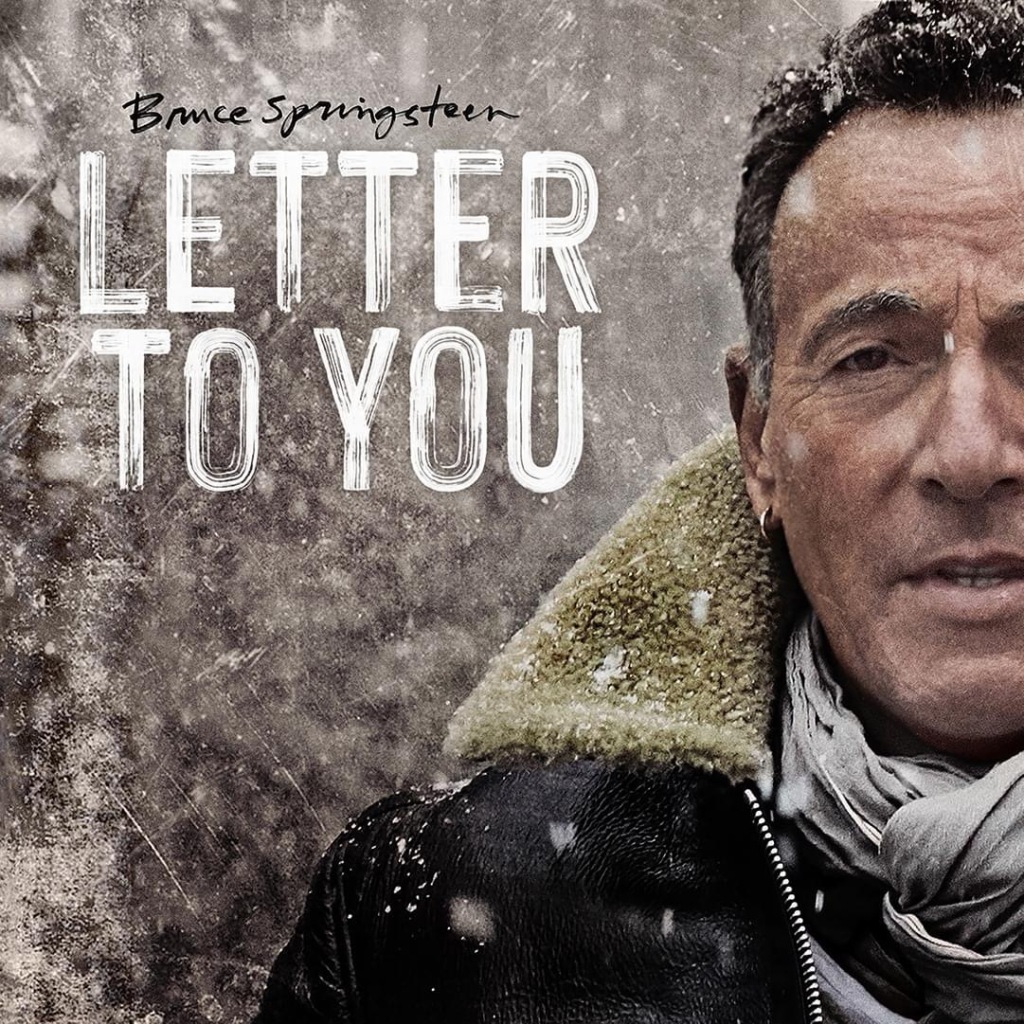
In the fifty-year-plus career of American musician and artist Bruce Springsteen, he has had an uncanny knack for writing, singing and producing timely, meaningful music and albums that speak directly to our times, the unvarnished truths of our lives and the country. Springsteen’s ever watchful eyes, ears and mind see the realities of American life, find what’s meaningful to our nation and it’s citizens, identifies what’s most important and boils off the white noise and chatter of media, talking heads and loud hailers. His lyrics, music and albums speak in a voice that emanates from a raw, honest and visceral place of the American spirit.
In 1975, he released his seminal work Born To Run, which captured one long, hot night of summer and, in essence, reflected America’s lost innocence resulting from the Vietnam War and the Nixon presidency. The River captured the end of youth, and marked the beginning of the dark, tired days of adulthood, shining a light on blue collar lives worn out from the oil embargo, stagflation and lost jobs during the Carter administration. In 2002, Springsteen released The Rising which spoke to our nations fears, heartaches, devastation, and emotional, psychological fallout from the attacks of 9/11. It paid tribute to the lives of those lost and those that remain behind, but ultimately reflected the best of our nation: the hopes for what we could do as a nation, a people that came together during dark times to help each other recover and try to begin again.
Springsteen’s Letter To You was inspired by events of 2018 and recorded in November of 2019, well before the world learned the importance of the words Corona Virus 19, nasal swabs and quarantine. However, the album turns out to be the defining work of art reflecting our lives and reality in 2020. The lyrics and songs reflect the loss of loved ones, the loss of connection with those around us, the loss of innocence, the loss of time, separation, isolation, loneliness, age, death and the ghosts that we carry in our daily lives. Before we slipped into a perpetual Ground Hog’s Day, living every day mostly the same over and over, Springsteen had his finger on some of the defining characteristics of our time: the fracturing of our communities due to technology, social media platforms, multitudes of streaming devices for music, movies and other art forms, and the raging tribalism of national politics. But through it all, despite the darkness on the edge of town, Springsteen’s work leaves us with a sense of hope, a dream of better days. The promise of sunlight up around the river bend. A land of hope and dreams beyond the road’s horizon.
The album was released in October of 2020 along with a documentary film of the same title directed by long-time collaborator Thom Zimny. The pair of projects are intertwined, helping Springsteen broaden the visual and emotional impact of his vision and message. The album and movie have been out for two months now, so I am delayed in writing this, but the music and images are so dense, layered and meaningful on so many levels, I am still trying to unpack it all and may never reach the end, isn’t that one of the truths of all great art? Also, as a long time serious fan of his work, professionalism and high quality of his craft, anytime I write about a project, I feel I owe it to him as part of our agreement to give the best I have within my abilities, just as he does for us.
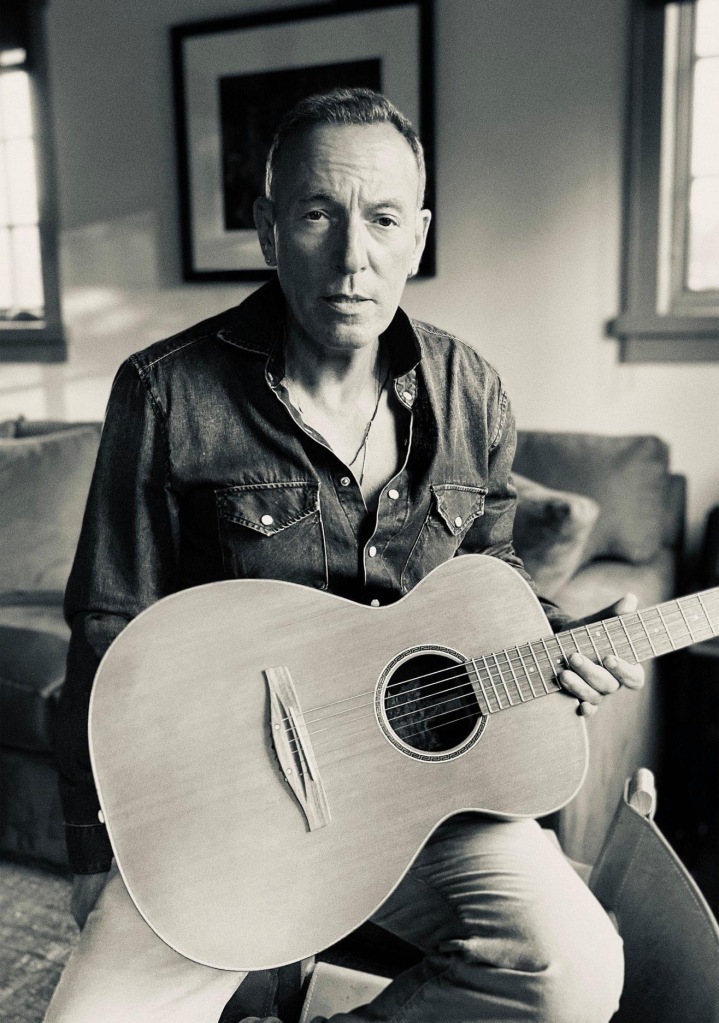
As Springsteen has said in interviews many times over, he hadn’t written any songs for the E Street Band since 2012’s Wrecking Ball which shone a spotlight on the wreckage, carnage and destruction the 2008 financial meltdown left on the American people and country. But two events merged into a channel helping Springsteen write the songs that form one of the best albums of his career. First, during his historic run of Springsteen on Broadway which played at the Walter Kerr Theater in NYC for 236 shows spread over 15 months between October 2017 through December 2018, an unnamed fan from Italy handed Springsteen a handmade acoustic guitar as he exited the theater and got into his car. Springsteen thanked the fan, took the guitar home with him where it sat in a corner of his house untouched for months. Secondly, in 2018, Springsteen’s friend and former bandmate George Theiss from their 1960’s band The Castiles passed away from cancer. Springsteen realized on his drive home from the hospital that he was the last man still alive from that band: he was the last man standing. In the weeks that followed, Springsteen picked up that fan’s gift to him, the guitar sitting in a corner which called to him like a musical divining rod, and the songs came to him quickly like messages from the great beyond.
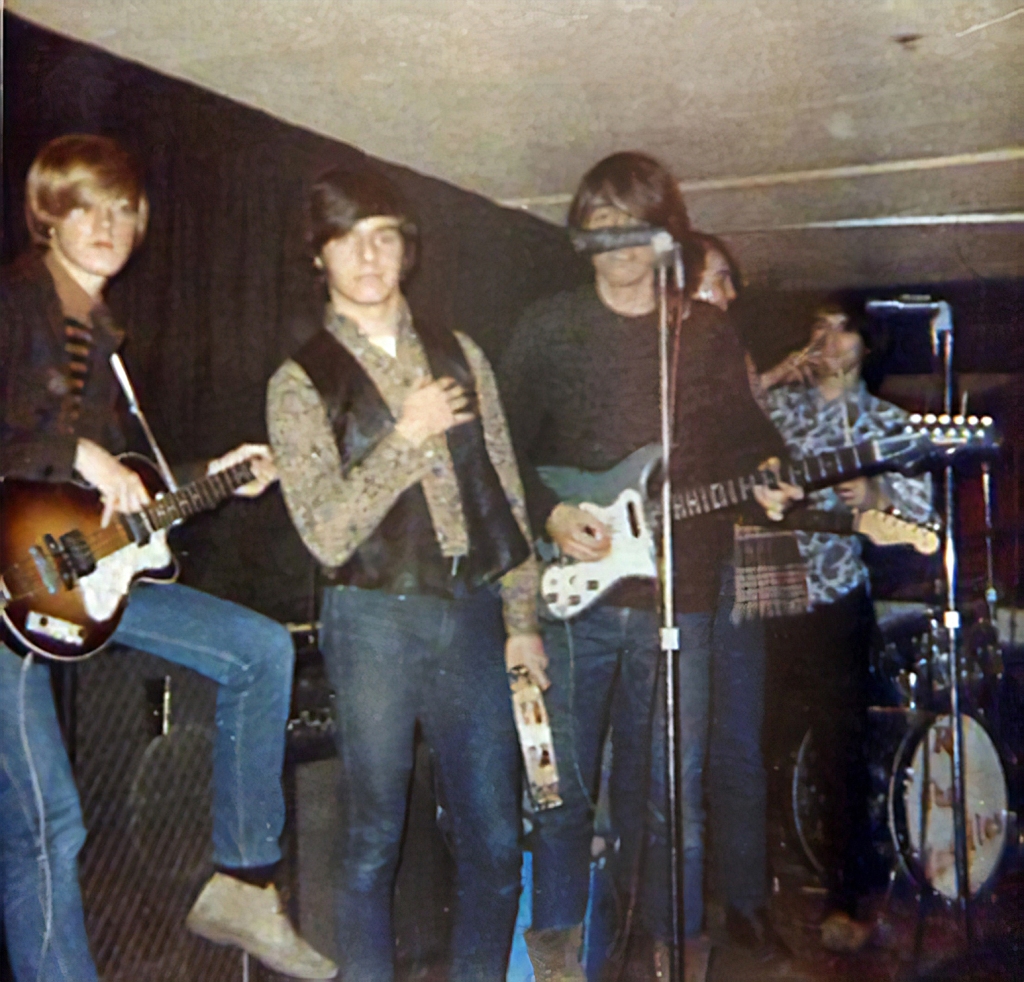
In the last five years, Springsteen has spent a lot of time and artistic reflection on his life and career. He wrote his autobiography Born To Run, unbelievably while touring almost non-stop from 2009-2015, somehow finding the energy and time after exhausting himself for nearly 3-4 hours on stage. He wrote and performed Springsteen On Broadway which told his life story through his songs. He wrote, composed, arranged and recorded the album Western Stars along with the accompanying film which included live performances of the album songs backed by a terrific band and orchestra and also contained spoken narrative passages. And now Letter To You album and film. I’ve read several critiques of the latest project and a lot of writers have said these projects were Springsteen’s effort at a summation or ending. I see these efforts as a way for Springsteen to try to understand to the best of his abilities his life, his journey, his friends and family, his music and his fans. In knowing, where he came from and where he’s been, he has a guide to where he is headed in his artistic vision. Springsteen has had one of the most productive and prolific parts of his career in the last twenty years, comparable only to degrees with those of Paul McCartney and Bob Dylan in longevity, high quality and willingness to take chances. Signs indicate his sights are set on many more various projects, musical styles and records to be made. As he has described before, there is only so much time in every person’s life and there’s a train barreling down the tracks that focuses one’s attention.
The album was recorded at Springsteen’s home studio with the full band in just five days, well recorded in four and played back on day 5. This is unheard of in Springsteen’s career, some albums, specifically in his earlier career, taking as long as 18 to 24 months to record, arrange, mix and produce. After spending decades together, the band demonstrates a fine- tuned short hand that allowed them to quickly listen to Springsteen sing the lyrics and rough chord progressions for each individual song, discuss, arrange, play and record each track. The band is in fine form, possibly some of their best recordings of their careers. Especially the drumming from Max Weinberg who, as you can see in the movie, sat directly in front of Springsteen’s isolation booth making sure his eyes remained focused on Springsteen’s every move just as he does on stage, searching for the smallest cues in Springsteen’s movements and facial expressions. Garry Tallent’s smooth, subtle bass lines provide the foundation for the rest of the E Street Band sound. He’s not flashy or showy, that’s not his style, but it’s there all the time if you listen hard enough.
Steven Van Zandt provides excellent guitar solos on If I Was The Priest and Song For Orphans. Nils Lofgren provides excellent acoustic guitar accompaniment on Last Man Standing that propels the song forward while keeping it anchored at the same time. Charlie Giordano’s organ is subtle and finely textured as usual and stands out on I’ll See You In My Dreams. Roy Bittan’s piano as always makes an indelible presence in every song; there would be no E Street sound without Roy’s piano. Jake Clemons provides excellent, soaring sax solos on Last Man Standing and Ghosts. And Patti Scialfa, a fine artist and song writer in her own right, provides accompanying vocals on several tracks.
The album begins with One Minute You’re Here, a hypnotic simple acoustic guitar line repeating itself over and over, ethereal keyboards hover in the background as Springsteen sings, “Big black train comin’ down the track/Blow your whistle long and low, one minute you’re here/Next Minute you’re gone.” The guitar playing and vocal phrasing and tone remind me of The Hitter from his 2005 release Devils and Dust. He’s obviously thinking about that train of mortality barreling down the tracks toward him and anyone else in it’s path and I hear echoes of Junior Parker’s Mystery Train made famous by Elvis Presley, one of Springsteen’s musical heroes, with that long black train, 16 coaches long taking his baby and gone. The song sets the stage for what is to follow with it’s focus on those who have come and gone, their spirits that remain with us as we move through life, friendship, comradery, love, loss and hope. The album and songs were inspired by the passing of one bandmate, but he also carries the ghosts of others like E Street Band members Clarence Clemons and Danny Fedirici, his friend and guardian Terry McGovern, his father and grandparents and many others.
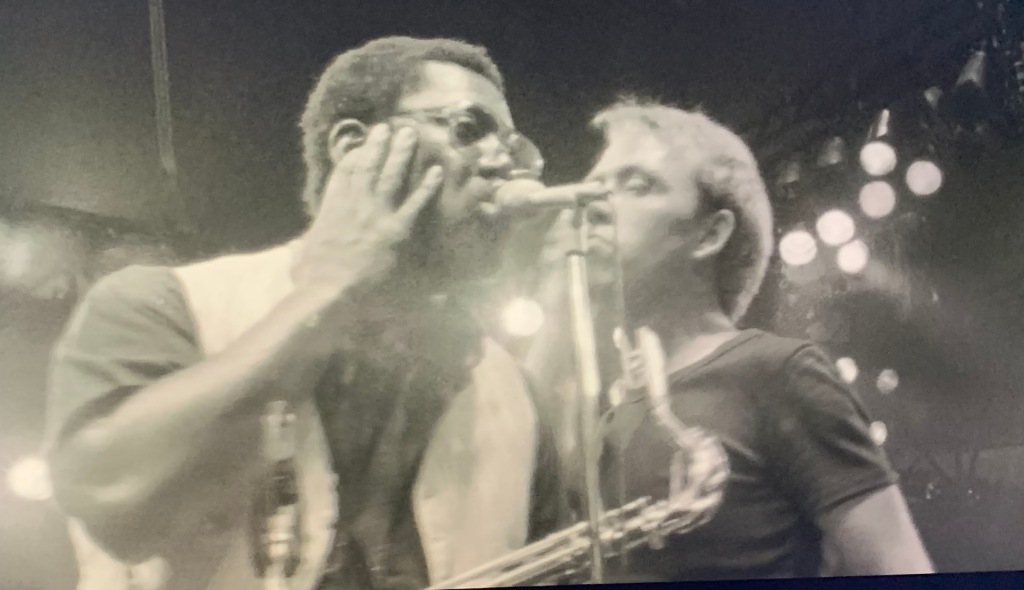
In Letter To You, the second tack on the album, Springsteen summarizes the song, the album and his whole career in two lines, “Got down on my knees grabbed my pen and bowed my head, tried to summon all that my heart finds true/And put it in my letter to you.” As he said in the Broadway show, his whole creative career has been a long, noisy prayer, his magic trick. The letter he writes is a letter for us the fans, his bandmates, other musicians, his family and friends and to himself, his way of organizing and clarifying his thoughts. It’s a letter decades in the writing. Part of the ever evolving conversation he’s been having with his fans since he first picked up a guitar and put pen to paper.
As Springsteen says in the movie’s introduction, “I’m in the middle of a 45-year conversation with these men and women I’m surrounded by and with some of you. Now with some of you I suppose we’ve only recently started speaking. But either way, I’ve tried to make that conversation essential, fun and entertaining. I started playing the guitar because I was looking to speak to and correspond with you. I guess that worked out better than my wildest dreams. All I know is after all this time, I still feel that burning need to communicate. It’s there when I wake every morning, walks along side of me throughout the day, and is there when I go to sleep each night. Over the past 50 years, it’s never once ceased, owing to what I really don’t know. Is it loneliness, hunger, ego, ambition, desire, a need to be felt and heard, recognized, all of the above? All I know is that it’s one of the most consistent impulses in my life. As reliable as the rhythmic beating of my own heart, is my need to talk to you.”
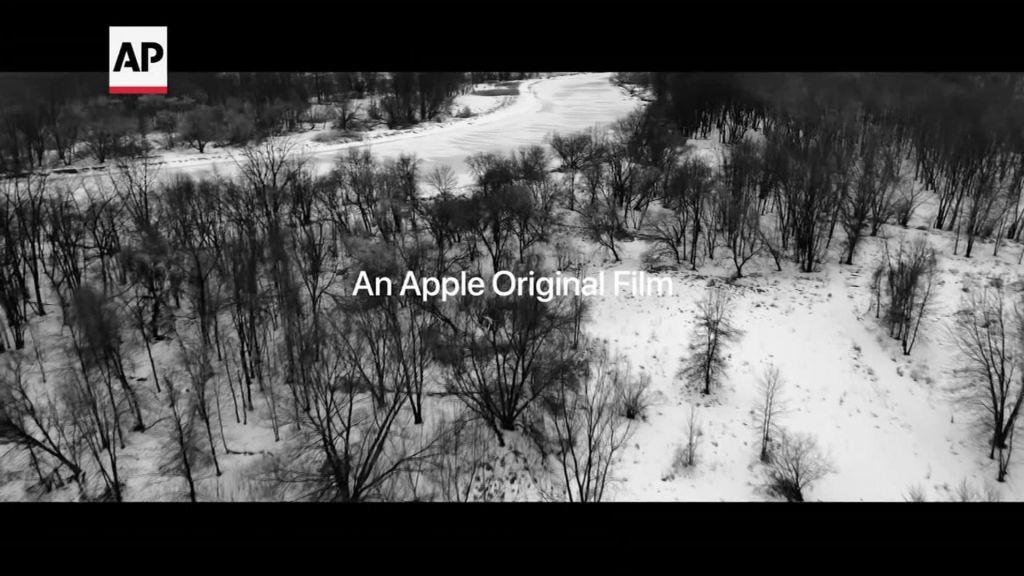
Up Around The River Bend
Listening to the album is one thing but to see the documentary is a whole other animal that takes the music and meaning to an entirely higher level. Director Thom Zimny has worked with and collaborated with Springsteen for more than 20 years now and has directed and produced, among many other projects, Wings For Wheels, the movie that accompanied the 30th anniversary released of Born To Run, The Promise which was part of the box set released for Darkness On The Edge of Town and The River documentary that was part of the box set for that release. Before Springsteen recorded the music for Letter To You, he called Zimny and asked him to come down and film the band as they recorded with only one instruction: stay out of the way. The movie captures the band in all of their glory and demonstrates the work that went into the recording process from the musicians to producer Ron Aniello, the sound engineers, techs and Jon Landau, Springsteen’s long time manager, co producer and friend.
It’s beautifully constructed, shot in black and white and strikes to the heart of the album’s message whose essence is captured in a scene where after a long day’s work in the studio, the band gathers around to raise a toast and Springsteen says, “We’re taking this all the way boys, until we’re all in a box”. It’s only rock and roll, but it’s as important as life and death. The choice of black and film is genius in a few respects. On the previous documentaries, Zimny had access to black and white video footage shot by Barry Rebo in the studio while the band recorded Born To Run, Darkness On The Edge of Town and The River. Here, Zimny chooses black and white possibly to put the album and band in a historical perspective, adding a softening touch to footage which clearly shows the years the band has put in together, close ups of their hands, eyes and faces for all the world to see.
The choice of black and white also plays into the weather at the time of the recording as snow falls outside of the recording studio, blanketing the area in beautiful white landscape similar to some of Andrew Wyeth’s paintings. This provides for an earthy, realistic and gritty contrast to the black trees in the nearby woods and plowed, barren fields. Zimny uses drones to capture footage of the surrounding area’s rural setting giving a ghostly, ethereal feel to the movie and working hand in hand with the music and themes. Black and white is binary, it’s one thing or the other, but the scenery adds a gray texture to it and the drone hovers just as the ghosts Springsteen sings of, Clarence, Danny, Terry, his father, George, hover overhead, watching, listening and guiding with their spirits. The opening shot shows snow covered fields and trees near a winding, frozen creek that mirrors the lyrics of my favorite song from the album, I’lll See You In My Dreams: “I’ll see you in my dreams, When all our summers have come to an end/ I’ll see you in my dreams, we’ll meet and live and laugh again/ I’ll see you in my dreams, Up around the riverbend/For death is not the end”.

When one considers the role and place of a special tree in Springsteen’s autobiography and one-man Broadway show, the trees in Letter To You take on even more significance. In the book, Springsteen writes lovingly about a giant copper beech tree that stood in the front yard of his boyhood home under which he played as child, counting and feeling the trees roots, and climbing to the top to feel the breeze on his face. “The tree sprouts, it’s branches thicken, mature, bloom. It is scarred by lightning, shaken by thunder, sickness, human events and God’s hand. Drawn black, it grows itself back toward lights, rising higher toward heaven while thrusting itself deeper, more firmly, into the earth. It’s history and memory retained, it’s presence felt.”
After describing his entire life, the joys, heartaches, triumphs and longevity, he returns at the end of the book to the tree. “On a November evening during the writing of this book, I drove once again back to my hometown, back to my neighborhood. The streets were quiet. My corner church was silent and unchanged. Tonight there were no weddings, no funerals. I rolled slowly another 50 yards up my block to find my great towering copper beech tree gone, cut to the street. My heart went blank….then settled. I looked again. It was gone but still there. The very air and space above it was filled with the form, soul and lifting presence of my old friend, it’s leaves and branches now outlined and shot through by evening stars and sky. A square of musty earth, carved into the parking lot blacktop at pavement’s edge, was all that remained. It still held small snakes of root slightly submerged by dust and dirt, and there the arc of my tree, my life lay plainly visible. My great tree’s life by county dictum or blade could not be ended or erased. Its history, it’s magic, was too old and too strong. Like my father, my grandmother, my aunt Virginia, my two grandfathers, my father in law Joe, my Aunt Dora and Eda, Ray and Walter Chicon, Bart Haynes, Terry, Danny, Clarence and Tony, my own family gone from these houses now filled with strangers- we remain. We remain in the air, the empty space, in the dusty roots and deep earth, in the echo and stories, the songs of the time and place we have inhabited. My clan, my blood, my place, my people.”
In the movie, the images of the trees take on a life of their own, becoming silent characters in the movie like the snow itself. The trees stand in as the chorus from Greek Tragedy. They stand in place of the spirits of Springsteen’s family, friends, bandmates, love, music, inspiration and God’s divining hand providing shade, cover, warmth and the breath of life.
Ghosts: I Shoulder Your Les Paul and Finger The Fretboard
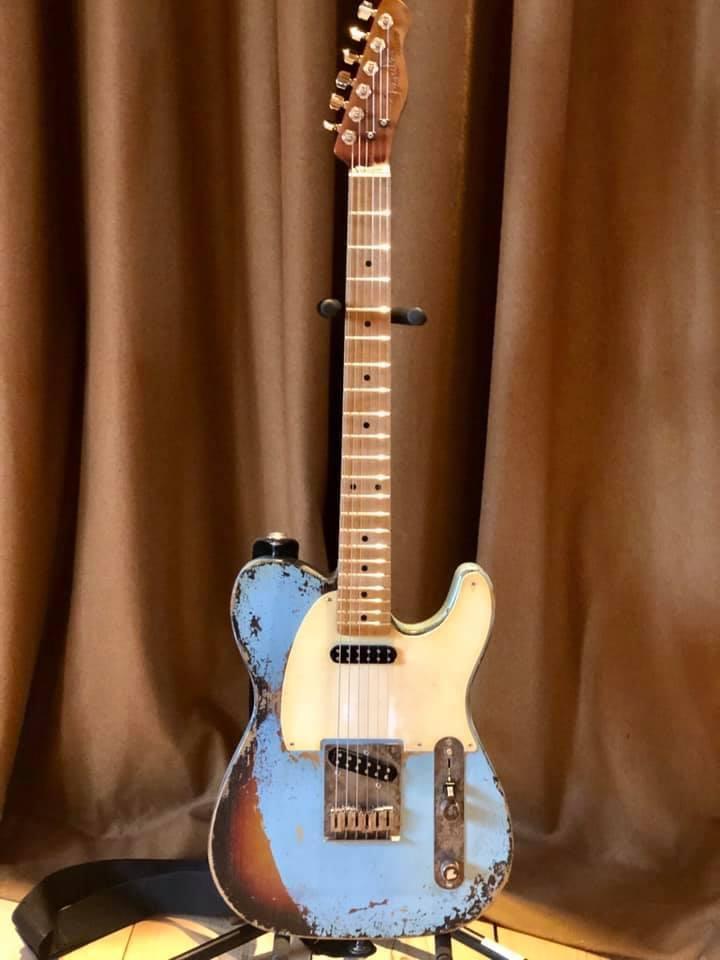
The images and ideas of ghosts are ever present in the music and movie, some more obvious than others, but all adding up to prove his point: we carry the spirits of those we’ve known with us every step of the way. In a narrative leading into Ghosts, Springsteen says, “Where do we go when we die? Maybe we go nowhere or maybe everywhere. Maybe our soul resides in the ether, in the starless part of the sky and resonates outward like a stone dropped into a still lake whose circles are the lives of the people we’ve touched over the course of our lives. No one knows where or how far their soul may sound we travel. Or, maybe it’s all just bones, dirt, clay and turtles all the way down. I don’t know. But I’ve grieved at the thought of never seeing some of those that I’ve loved and lost again. But those passed never completely disappear. We see them on familiar streets, in empty clubs and late nights of long ago. They move in shadows, glimpsed only from the corner of our eyes. We see them in our dreams.”
As even casual fans of Springsteen’s work know, he is incredibly deliberate, meaningful and serious when it comes to the work that goes out under his name, leaving nothing to chance, fate or a roll of the dice. He is a perfectionist who wants his vision communicated clearly and directly with his audience. If you see or hear it, it’s on purpose and there for a reason. Letter To You is an Easter Egg hunt of clues, symbols, metaphors and images that are absorbed slowly and throughout the music forming a strong sense of the truth of which he speaks.
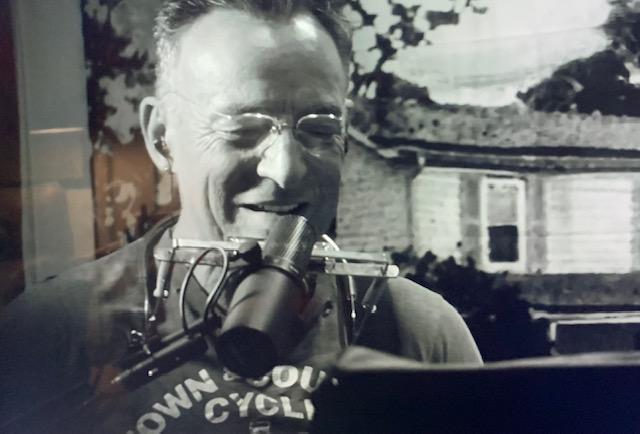
Consider the following:
- One of the guitars he uses during the recording photo above was given to him prior to recording. It’s worn and aged, seemingly battle tested and scarred from thousands of hours of practice and live performances. It stands in for one he or one of his earlier bandmates could have used decades ago.
- A brief clip of the band exiting the stage after their rave performance at the No Nukes concert in 1979 with Clarence Clemons picking Springsteen up like a football and carrying him off camera.
- Danny Federici’s glockenspiel has a prominent place in the recording studio which Roy Bittan is asked to add a part on during the recording, bringing the instrument back to life with Fedirici’s spirit.
- A saxophone travel case with Clarence Clemons name in tape appears briefly
- A Backstreets Magazine appears briefly lying atop a studio coffee table. The back cover showing Springsteen and Clemons together during the Born To Run album cover shoot
- During the filming and recording of the album, Jake Clemons plays a saxophone solo on Power of Prayer while Springsteen stands behind the mixing board with his arms waving in the air like a conductor. This mirrors the memory of Springsteen conducting Clarence Clemons’s earth shattering solo on Jungleland during the recording of Born To Run. Clemons said that he and Springsteen worked on that solo one note, one inflection, one bar at a time, “No Big Man, play it like this.”
- A stock video image of a little boy climbing a tree in front of a house.
- Springsteen stands in his isolation booth during the recording of the album. A tapestry or print hangs behind him on the wall which shows his boyhood home of 39 1/2 Institute Street, Freehold, NJ. His history and his ghosts peer over his shoulder. Or possibly, that is a cinematic magic trick Zimny pulled from his deck of cards in post production?
- Footage taken from the recording of Darkness appears showing Springsteen and Van Zandt discussing the arrangement of a song and the the film cuts to them having almost the same conversation and same looks on their faces as they discuss the arrangement of a song on Letter To You 40 years later. Some things never change.
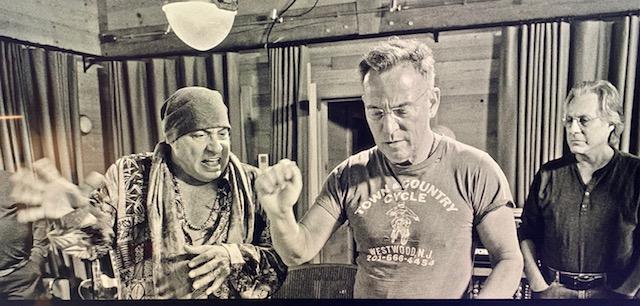
Springsteen’s cousin Frank Bruno appears throughout the film, and there is a reason. When Springsteen got his first guitar, he was trying to learn at home on his own but he didn’t have the rudimentary facts down like how to tune a guitar and how to play basic chords. His cousin Frank came to their house one day and showed young Springsteen how to tune his guitar, how to hold his fingers on the fret board, to play basic chords and lent him a song book of basic American folk songs. As he stated in a recent interview with Jimmy Fallon, the first song Springsteen ever learned to play was Greensleeves which only had two chords. Then the first rock and roll song he learned to play was The Beatle’s cover of The Isley Brothers song, Twist and Shout, after he learned to add a third chord. Bruno is there in the film as a visceral, tangible connection between his past and present, between that distant moment in time decades ago and his storied career with the man who helped him take his first steps on a long and winding journey.
During a break in the recording, Springsteen is seen talking with Van Zandt and Nils Lofgren about guitars, the kind they used when he first got started and describes a Sears and Roebuck guitar which had a speaker built into the body of the guitar which sounded terrible. After the credits are done rolling, the last minutes of the film show Springsteen sitting in front of his studio along with his cousin Frank Bruno. They both hold guitars, Springsteen’s being a Sears and Roebuck with a speaker built into the stock. He then proceeds to play and sing Baby I , the song Springsteen and Theiss wrote together in the 1960s and which was the first song Springsteen ever recorded in a studio which was in Bricktown, NJ. As Springsteen hammers his way through the song, which sounds very similar to Them’s Gloria, Frank Bruno strums along on rhythm guitar. Just like in all of his other work, Springsteen starts at the beginning, goes on a long journey and then brings it all back home. The alpha and the omega.
I’ll See You In My Dreams
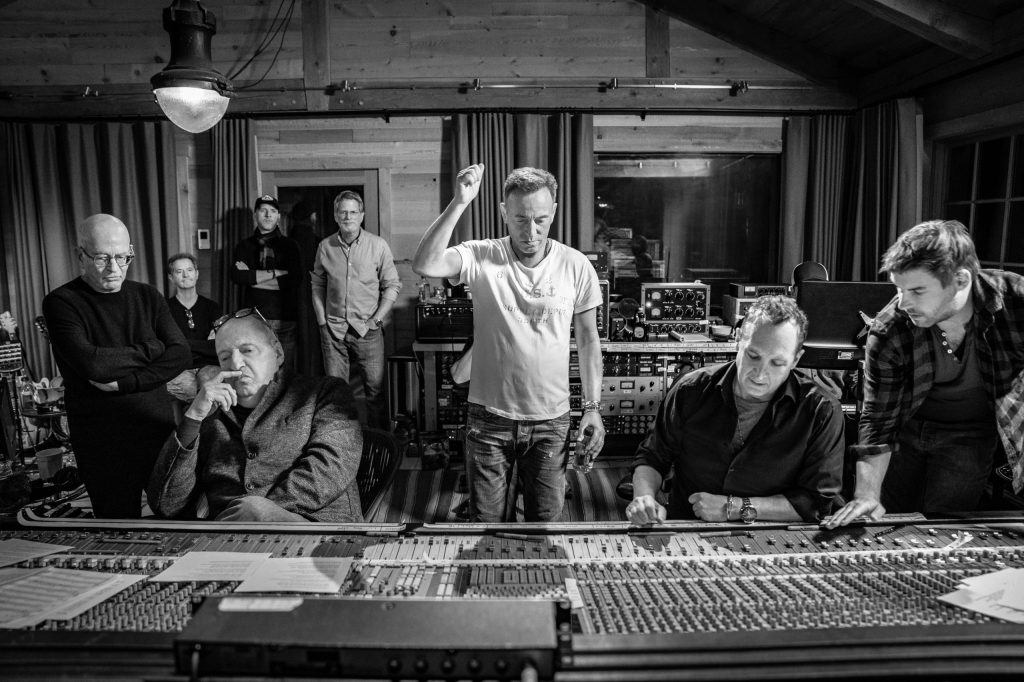
At first glance, the album may appear to be a grab bag of newly written songs and earlier outtakes. The album contains 12 songs including Janey Needs A Shooter, written in the early 1970s. Warren Zevon later borrowed at least the title and used it as the basis for his song Jeannie Needs A Shooter which has different lyrics and a story setting. Based on interviews, Springsteen has stated he recorded the song a few years ago to possibly release as a Record Store Day release but decided it was too good and needed to be used on a full project. Song For Orphans and If I Was The Priest were both written around the time he auditioned for John Hammond at Columbia Records. Both tracks were left off his first few albums and then they just sat dormant in the proverbial but legendary vault at Thrill Hill Studio collecting New Jersey dust. Springsteen says in the film as an introduction to Song For Orphans, “The songs from 1972 were and remain a mystery to me. They were just the way I wrote back then, a lot of words. As a matter of fact, Clive Davis, the man who signed me to Columbia Records with John Hammond called me briefly after we released Greetings and said someone had called him and told him if I wasn’t careful, I was going to use up the entire English language and he said that was Bob Dylan. And Bob was always my mentor and the brother I never had so I took the words quite seriously. But all I know is these songs hold a very warm place in my heart. The song Orphans is about someone overcoming their fears, their doubts, their time. It’s about fighting for a place of their own.”
If I Was The Priest and Orphans harken back to his original writing style which was abundant and colorful and character driven, full of metaphors, allegory and story lines. Some have likened his lyrics, singing and arrangements to Bob Dylan and there are some similarities, but I think the best comparison or influence is actually from The Band, especially in the current arrangement and sound with heavy guitar tethered to Giorando’s organ and Bittan’s piano lines. There is obviously a lot of cross over between Dylan and The Band since The Band worked with Dylan for several years both on the road and at Big Pink, but The Band had a very distinctive sound with Garth Hudson’s organ and early synthesizer keyboards, Levon Helm’s solid but funky drumming, Rick Danko’s bass and Robbie Robertson’s piercing guitar lines.
Springsteen has also stated in interviews that he originally wrote Rainmaker, which many listeners have incorrectly assumed is about Donald Trump, about George W Bush around the time of the Magic album. While the imagery of a snake oil salesman applies even more appropriately to the current occupant of the White House, the song was not written for this album. Regardless of when the songs were written and originally recorded, Letter To You is the first Springsteen album in a long time which contains a narrative arc from start to finish much like his albums Born To Run, Darkness and Nebraska. It begins with One Minute You’re Here speaking to the precariousness of life and our connections to each other, proceeds through the trials, tribulations and turmoil that we all experience in life to one degree or another and concludes with I’ll See You In My Dreams which is a summation of the overall, reaching hope of life beyond this mortal world, somewhere in the ether, possibly a half way point between heaven and earth. A hope that despite the years and miles travelled and the spirits lost, that we’ll see them again, if only in our dreams.
One of the most touching and poignant scenes in the film occurs as the band gathers around the mixing board and listens to the playback of Dreams. Landau its to Springsteen’s immediate left. As the lyrics and arrangement come floating through the speakers, Landau is visibly taken emotionally and sheds some tears. Perfectly captured on film for all to see and experience, Landau’s reaction acts as a summation of the emotions and thoughts he shares with many of us on the outside: what a long, strange, beautiful trip it’s been. Landau turns to Springsteen and says, “It has magnificence.”
Even the ghosts of Springsteen’s musical past have haunted him, and now a few of them find their way to a permanent home on his new album. He has said that he carries a library of recorded songs that didn’t make their way onto a project and periodically, he’ll check in with them listen and think of ways to find them a permanent home. I do not mean to pry into his private life or even remotely consider I know his private thoughts and don’t want to know, but there is one aspect that he has spoken of publicly which is his mother Adele, his life-long cheerleader and the woman who bought him his first real guitar as a Christmas present long ago.
In an interview in AARP OCT/Nov 2020, Springsteen is asked about his mother Adele who, he has acknowledged and spoken publicly, has suffered from Alzheimer’s for close to 10 years. “I’m very lucky that my mother remains in very, very good spirits. She can’t really speak, but when you see her, she still moves to rhythm or put music on, and she’s happy. She’s always got a smile. Always got a kiss or hug. She can’t name you now or anything, but she can recognize you and is excited when you come over. It’s been 10 years. And her progress was very slow, so I consider us quite lucky with the disease.” In his one man production, Springsteen On Broadway just as in his autobiography Born To Run, Springsteen speaks lovingly of his mother, always cheerful, hardworking, joyful, ready to dance and the life and spirit of their family. I was lucky enough to attend the show with my brother, and during the introduction to The Wish, Springsteen said, “My mother is 7 years into Alzheimer’s.” Our mother had been diagnosed with Parkinson’s a few years prior to us attending the performance and we had watched her symptoms grow over time to include Alzheimer’s or some other sort of memory issue. His words made an instant, immediate connection with me, knocked me sideways and struck a raw nerve with me.
During the performance he sings:
“It ain’t no phone call on Sunday, flowers or a mother’s day card
It ain’t no house on a hill with a garden and a nice little yard
I got my hot rod down on Bond Street, I’m older but you’ll know me in a glance
We’ll find us a little rock ‘n roll bar and baby we’ll go out and dance”
In the third line, he pauses after saying ‘you’ll know me’ and repeats ‘you’ll know me in a glance”. It’s a heartbreaking acknowledgement directed at Adele, that she may not be able to say his name anymore, but despite the disease and it’s limitations on her memory and function, she still knows him and recognizes him and loves him. I watched my own mother struggle with these same issues before she passed and I can’t help but feeling that in some way, Springsteen is feeling like an orphan himself in a metaphorical sense as his father Douglas passed years ago and now his mother can no longer speak his name. I’ve been there and it’s devastating.
One fact of Springsteen’s life that has always stuck with me is that at the age of 18, his father decided they were leaving Freehold, NJ, the only town he’d ever known and was moving the family to California to make a new start. Springsteen was left in tough position, either leave his home and a budding musical career and his passion and dreams, or lose his family in a physical sense. Springsteen chose to stay and at a very young age he was alone, an orphan in a way. Maybe, he’s looking for a way home for himself and for the ghosts of his past while walking further on up the road to a future somewhere up around the river bend.
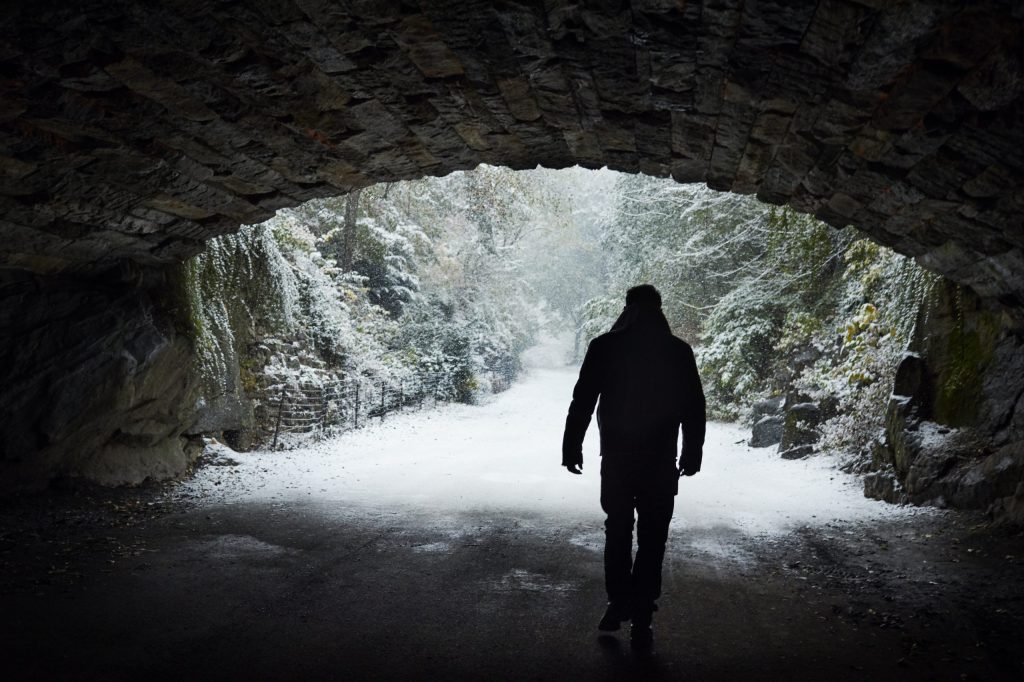
We’ll Rise Together and Fire The Spark
In A House of A Thousand Guitars, Springsteen sings, “All good souls from near and far, brothers and sisters wherever you are/ We’ll rise together til we fire the spark that’ll light up the house of a thousand guitars.” Whether intentional or not, a listener could be reminded of Springsteen’s Dancing In The Dark when he sings, “You can’t start a fire without a spark.” Springsteen has long held the belief in recording and especially on stage, that music is only truly communicated and understood and shared properly when the artist connects with the listeners and fans. That’s why he plays epic concerts that last nearly four hours, exhausting himself in the service of his craft, the music, his bandmates, his fans and all who came before. We rise and fall together. We all experience dark days, we lose loved ones, friends and family, we endure hardships, financial woes, psychological scars. But we also experience life’s pleasures, joys, tribulations, highlights, loves, passions, friendships and families together. His songs capture a snapshot of the crisis that has crippled our nation and taken so many from us in a short time, but it also reflects a universal truth: we get through these hard times together, as a family, as a community and as a nation together, with each other’s help, guidance and love. We get through the hard times and look forward to the next daybreak, somewhere over the horizon where we can stand together again at a concert singing our hearts out, where we can hug and kiss each other, a place where we can begin again.
Springsteen wrote a letter to us, the fans, the listeners, the critics, his family and friends and fellow musicians and we’re reading that letter along with all the others he’s written us for decades. What he has to say is vital, important, meaningful, hard rocking and beautiful. As always, he is ever present, a sentinel standing on the precipice, watching and listening, sending signals back to us, showing us the way forward to a better place.
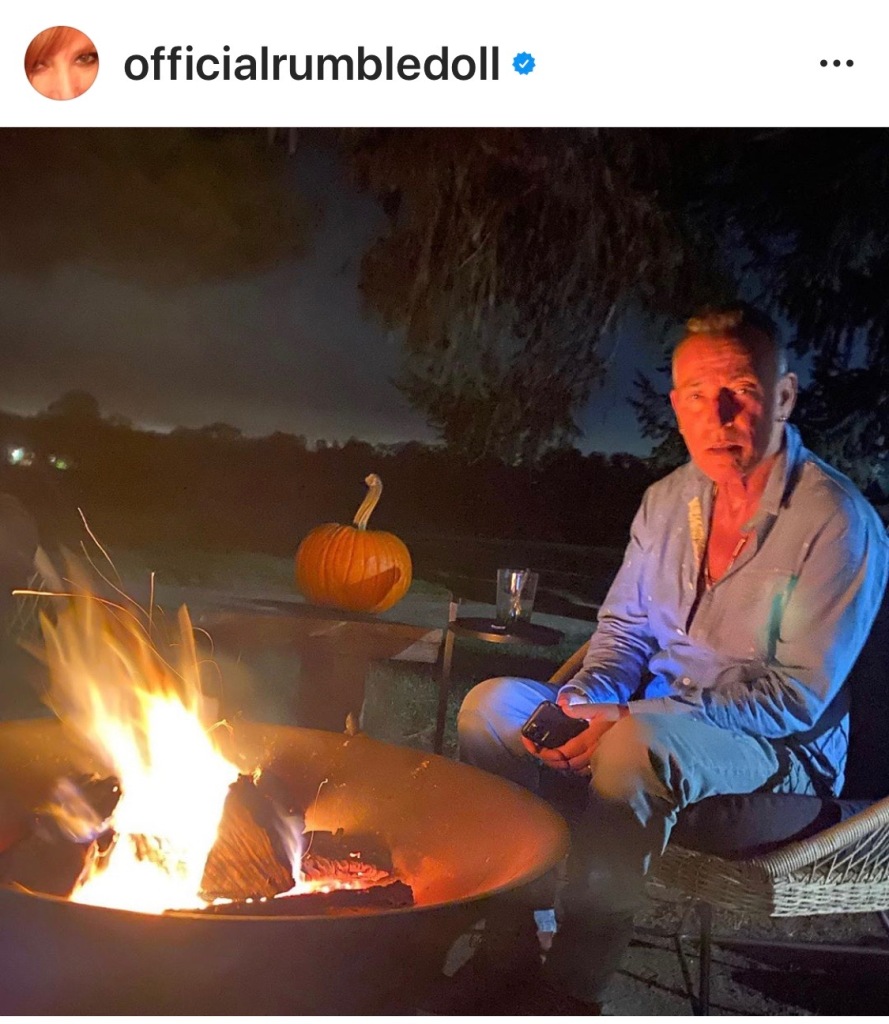
At the end of the film, a drone flies from the ground up into the air catching a beautiful, bucolic scene of black trees reaching high into the sky, towering over white, snow blanketed fields as fresh snow falls from the heavens. A road is cut through a stand of trees with fresh tire tracks dug into the rough road bed. Zimny presents an image of a road cut into the forest, a road cut by Springsteen through his own forest of vulnerability, tension, unknowns, precarious chances. A road he cut and paved on his own, with his two hands. A road that twists and turns with the hope of possibility. Springsteen continues a career filled with music, different genres, different styles, different band mates and he makes the road his own. He closes the movie with this last spoken passage which bears repeating, “Age. Age brings perspective. A defining clarity one gets at midnight on the tracks looking into the lights of an oncoming train. It dawns on you rather quickly. There’s only so much time left. Only so many star filled nights, snowfalls, brisk fall afternoons, rainy mid-summer days. So how you conduct yourself and do your work matters. How you treat your friends, your family, your lover. On good days, a blessing falls over you. It wraps its arms around you and you’re free and deeply in and of this world. That’s your reward: being here. That’s what gets you up the next morning: a new chance to receive that benediction….while you’re buttering your toast, getting dressed or driving home from work. You stumble into those moments when you can feel the hand of God gently rest upon your shoulder, and you realize how lucky you are. Lucky to be alive, lucky to be breathing in this world of beauty, horror and hope. Because this is what there is: a chance. A world where it’s lucky to love, lucky to be loved. So you go, until it fills you. Until the sweat, blood and hard tears make sense. You go until the light from the fading, distant stars fall at your feet. Go. And may god bless you.”
Any may god bless you Bruce Springsteen and all of your family and friends. Thank you kind sir. May we have another and another. Let’s dance.
